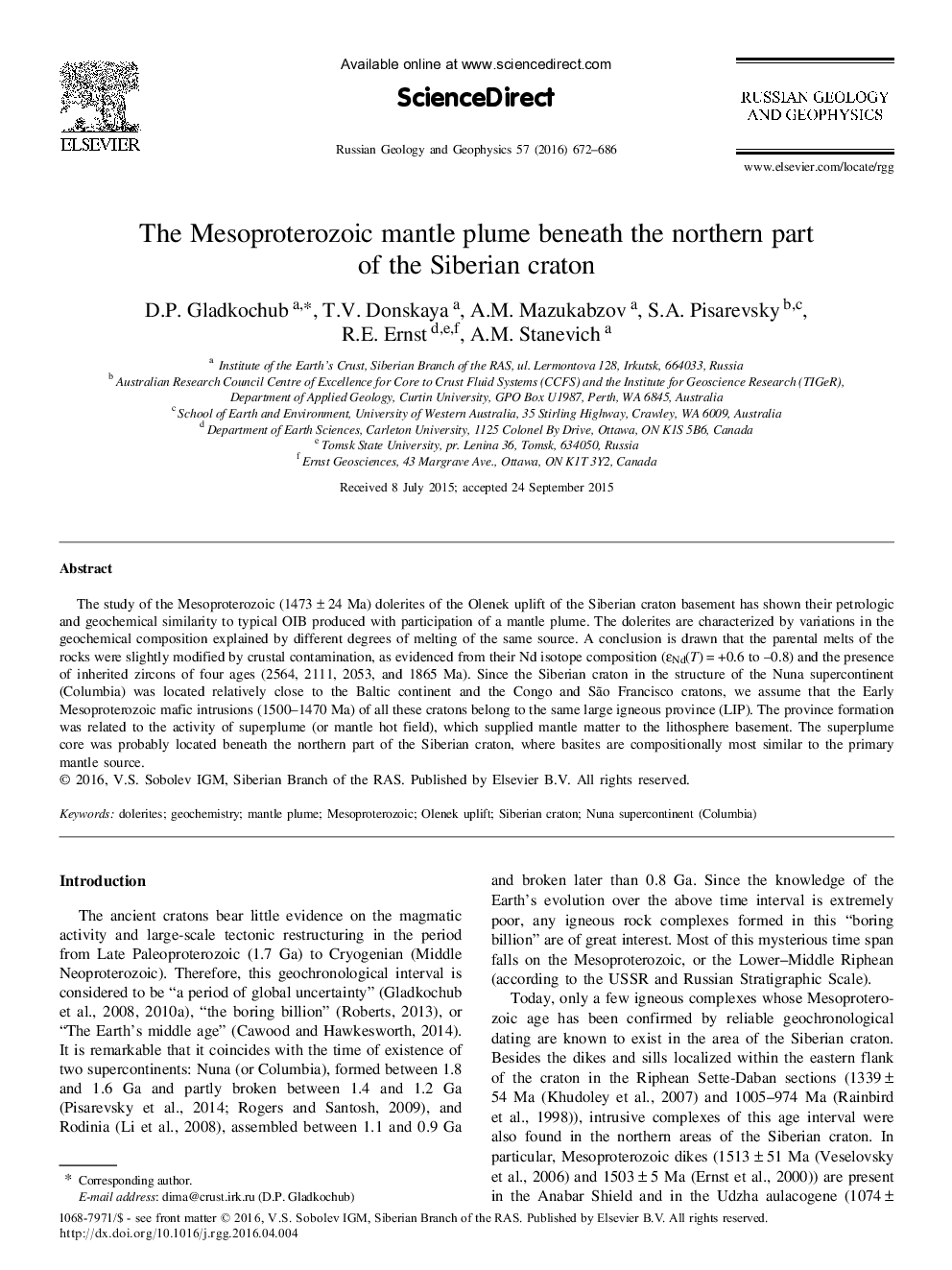| Article ID | Journal | Published Year | Pages | File Type |
|---|---|---|---|---|
| 4737226 | Russian Geology and Geophysics | 2016 | 15 Pages |
Abstract
The study of the Mesoproterozoic (1473 ± 24 Ma) dolerites of the Olenek uplift of the Siberian craton basement has shown their petrologic and geochemical similarity to typical OIB produced with participation of a mantle plume. The dolerites are characterized by variations in the geochemical composition explained by different degrees of melting of the same source. A conclusion is drawn that the parental melts of the rocks were slightly modified by crustal contamination, as evidenced from their Nd isotope composition (£Nd(T) = + 0.6 to â 0.8) and the presence of inherited zircons of four ages (2564, 2111, 2053, and 1865 Ma). Since the Siberian craton in the structure of the Nuna supercontinent (Columbia) was located relatively close to the Baltic continent and the Congo and Sao Francisco cratons, we assume that the Early Mesoproterozoic mafic intrusions (1500-1470 Ma) of all these cratons belong to the same large igneous province (LIP). The province formation was related to the activity of superplume (or mantle hot field), which supplied mantle matter to the lithosphere basement. The superplume core was probably located beneath the northern part of the Siberian craton, where basites are compositionally most similar to the primary mantle source.
Related Topics
Physical Sciences and Engineering
Earth and Planetary Sciences
Geology
Authors
D.P. Gladkochub, T.V. Donskaya, A.M. Mazukabzov, S.A. Pisarevsky, R.E. Ernst, A.M. Stanevich,
